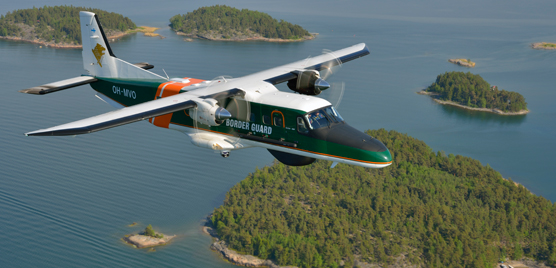Press release 2016-02-29 at 12:42
In 2015, the number of suspected illegal discharges of oil reported to Finnish authorities decreased significantly compared to the previous year. Eventually, 47 of the discharges were confirmed to be oil, whereas the corresponding number in 2014 was 68. Investigations concerning illegal oil discharge were started in 12 cases. The majority of the discharges were minor discharges near harbours or shores. The largest individual discharge released an estimated 0.77 cubic metres of oil into the sea.
The Baltic Sea is classified as a very sensitive marine area, because of which discharging oil into the sea is prohibited. The number of discharges in open sea areas has been on the decrease in recent years. However, seafarers are urged to also pay more attention to their activities in harbours in future.
Oil discharge surveillance is a joint international effort
Oil discharge surveillance is carried out in marine areas with the help of aerial surveillance and satellite imaging. The CleanSeaNet satellite imaging service of the European Maritime Safety Agency EMSA surveyed Finnish marine areas with approximately 200 images over the year. Any potential discharges detected in the images are always verified on site.
The Baltic Marine Environment Protection Commission (HELCOM) obliges all Baltic Sea states to carry out regular aerial surveillance in their marine areas. The sensors of the surveillance aircraft used by the Finnish Border Guard can detect oil discharges even through cloud cover, up to tens of kilometres away from its route. The aircraft are also equipped with vessel detection devices.

The Finnish Border Guard's Dornier 228 surveillance aircraft. © Katsuhiko Tokunaga
In 2015, the Finnish surveillance aircraft patrolled the Baltic Sea for a total of 490 hours. The most active shipping lanes are surveyed in cooperation with other countries, particularly Sweden and Estonia. Finland also participates actively in international surveillance operations in which specific marine areas are more extensively surveyed by the surveillance aircraft of several countries.
In June 2015, the Finnish Air Patrol Squadron's DO228 surveillance aircraft and its crew participated in the Baltic Sea states' joint Super CEPCO2015 surveillance operation in Aalborg, Denmark. The other participating countries were Denmark, Estonia, Germany, Ireland, the Netherlands, Norway and Sweden. In connection with the exercise the Finnish aircraft and crew also participated in the Oil On Water exercise in Stavanger, Norway together with aircraft and crews from Norway, France and the United States.